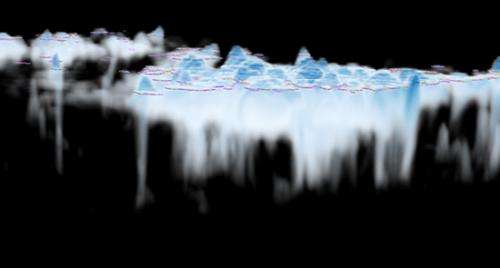Subgrid modeling pinpoints cloud transformation to uncover true reflective power

(Phys.org) —In the global scheme of things, clouds are the small stuff. And clouds' inner workings are even smaller. Scientists at Pacific Northwest National Laboratory found that neglecting the small stuff has consequences for understanding how clouds contribute to heating or cooling the planet. When global models average cloud cooling effects over a large area, they mask the cooling variability within a grid that eventually leads to changes in the clouds' characteristics. This research leads to uncovering the amount of cooling or warming enabled by clouds, and understanding the true energy balance of the planet.
Why It Matters: Calculating the right amount of sunlight beaming down to warm the ocean means understanding the kind of clouds parked between the sun and the ocean. When climate models do not accurately depict the characteristics of these clouds, perception of the planet's energy balance can be lopsided. Getting accurate understanding of the type and amount of clouds over the ocean is important for climate change projections. Because of their tendency to average out the effects over an entire spatial grid cell, global climate models may not capture the type of cloud and its real-world climate-influencing properties. This study accounts for the small-scale radiative energy and turbulent cloud interactions that will lead to more accurate model simulations of real-world clouds.
Methods: Marine boundary layer clouds are produced by interactions between radiative cooling from the cloud tops combined with turbulent cloud-mixing processes. PNNL researchers used a high-resolution, large-eddy simulation model to reveal the small spatial details of the cloud-top radiative cooling. They used those results to simulate detailed cloud radiation-turbulence interactions, as well as scenarios where the radiation was smoothed over the horizontal model grid area mimicking a climate model grid cell.

Next, the team compared these two types of simulations, finding that when small-scale variability is neglected, the model accelerates the transition of marine stratocumulus to trade cumulus clouds resulting in more sunlight warming the ocean instead of being reflected back to space by the white clouds.
This study was designed to reveal the impact of subgrid radiation variability of marine clouds and determine its overall impact for the Earth's energy balance.
What's Next? Further research will investigate how to use the coarse information available within a climate model grid cell to predict the unresolved small-scale radiation variability, and then to link this information into the turbulence parameterization within the model.
More information: Xiao H, WI Gustafson, and H Wang. 2014. "Impact of Subgrid-Scale Radiative Heating Variability on the Stratocumulus-to-Trade Cumulus Transition in Climate Models." Journal of Geophysical Research 119(7): 4192-4203. DOI: 10.1002/2013JD020999
Journal information: Journal of Geophysical Research
Provided by Environmental Molecular Sciences Laboratory





















